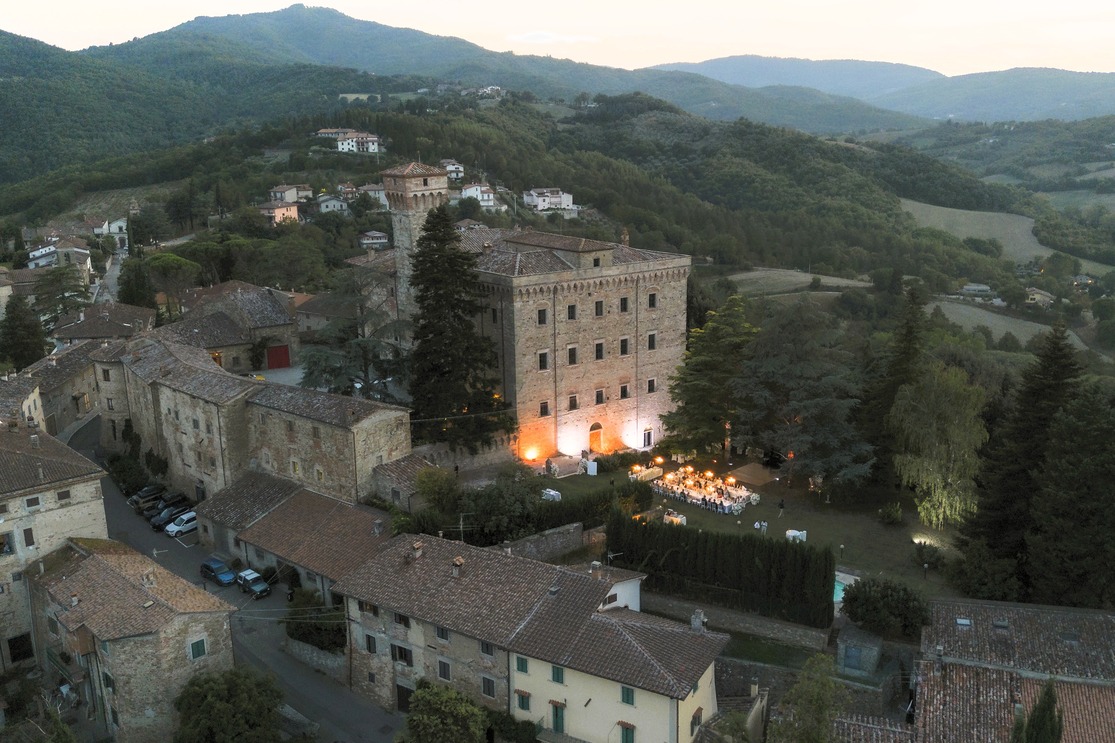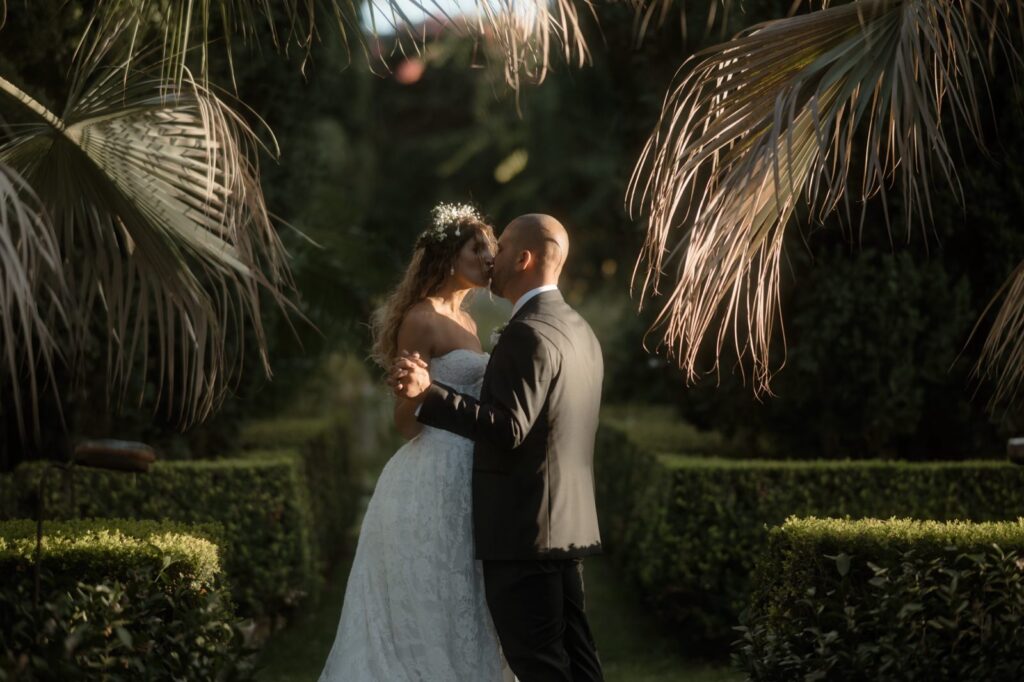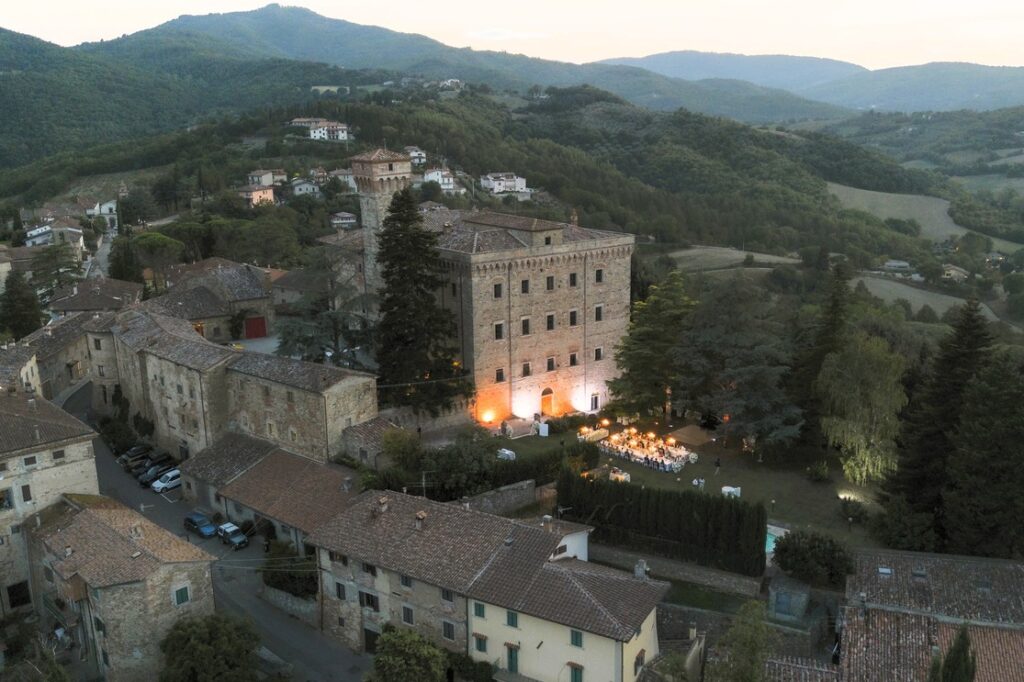Getting married in an Italian hamlet: what it really means
There’s something deeply special about the quiet elegance of a small Italian village. Far from the well-trodden paths and tourist landmarks, the hamlets of Tuscany and Umbria offer a setting where weddings feel personal, grounded, and truly unforgettable.
These historic places—often no more than a cluster of stone houses, a church, and a central piazza—hold a sense of intimacy that is hard to replicate elsewhere. Choosing to get married in an Italian hamlet means embracing a slower rhythm, one that allows you to connect deeply with your surroundings, your guests, and the meaning of the moment.
In a hamlet, everything feels closer: the people, the landscape, the history. The ceremony might take place in the village chapel or in a panoramic garden overlooking hills and vineyards. Guests gather just a few steps away for an open-air dinner in the square. Conversations linger. Time stretches. And every detail—from the sound of the church bells to the texture of the stone walls—becomes part of the memory.
This kind of wedding is not for those seeking grandeur. It’s for those who value authenticity, atmosphere, and connection. For couples who want to feel at home even far from home. For those who are drawn to places that still preserve a sense of identity and tradition.
In this article, we’ll look at what makes a wedding in a borgo so unique, explore some of the most beautiful villages in central Italy, and share practical insights on how to plan a celebration that honours both the place and your story.
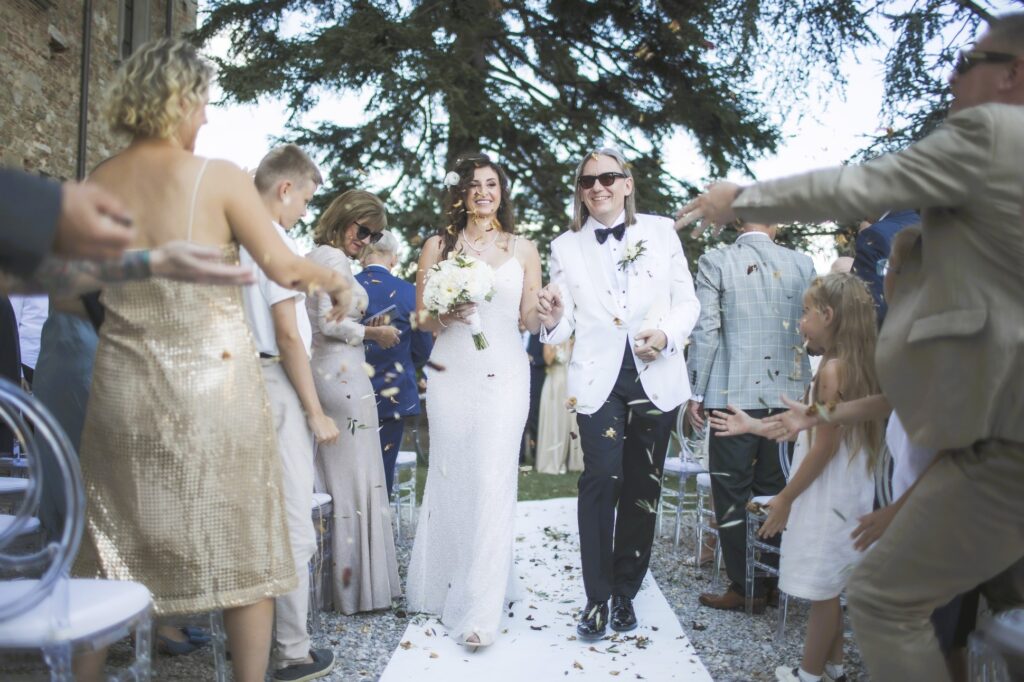
The unique charm of Italian hamlets: why more couples choose them for their wedding
Italian hamlets have a quiet, enduring beauty. Set among hills, vineyards, and olive groves, these small villages offer a setting that feels both rooted and intimate. Their charm lies in the balance between history and simplicity, in the slow rhythm of everyday life, and in the connection they create between people and place.
Choosing to get married in a hamlet means embracing a particular kind of atmosphere—one where everything is close, where time stretches out, and where even the smallest moments become meaningful. The ceremony, the dinner, the morning coffee—they don’t belong to separate parts of the day, but flow naturally into each other.
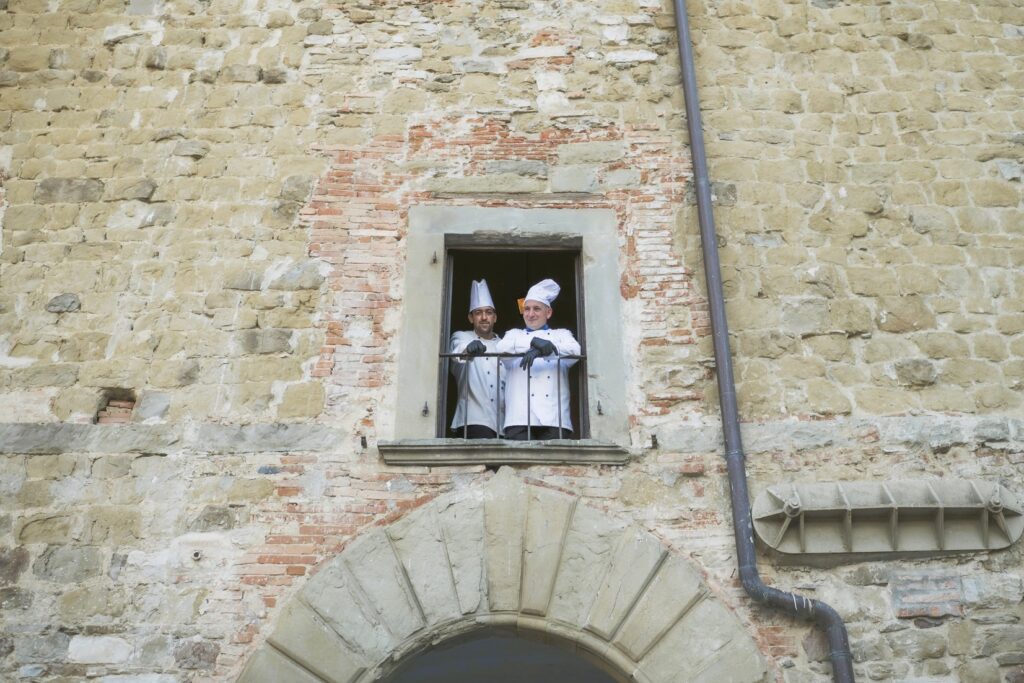
For many couples, this creates a wedding that feels immersive and deeply personal. Guests begin to live the place: they take their morning espresso at the bar in the piazza, walk slowly through narrow streets in the golden light of evening, and return to familiar corners of the village as if they’d always known them. The experience becomes part of the story.
The guest experience in a borgo wedding is shaped by this natural rhythm. There are no formal transfers, no packed timelines. Everything happens within walking distance. There’s space to breathe, to connect, to savour. And for the couple, this simplicity often brings clarity: fewer distractions, more emotion, more presence.
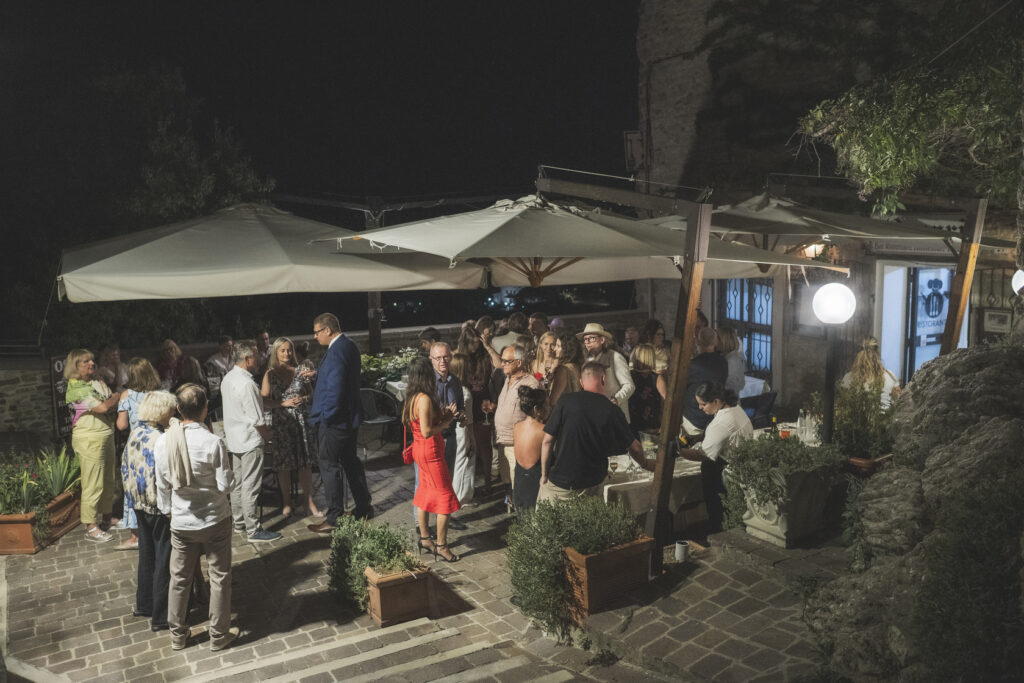
A wedding in a hamlet is not defined by size or formality, but by atmosphere. It invites people to slow down, to be together, and to experience something real—something that lingers.
The most beautiful Italian hamlets for a destination wedding in Tuscany and Umbria
The heart of Italy is dotted with villages where time seems to have paused. These Italian hamlets—small, historic towns with strong local identity—offer some of the most evocative settings for a destination wedding. In Tuscany and Umbria, many of these places remain quietly tucked away, preserving their soul and offering a rare sense of intimacy.
Here is a selection of some of the most beautiful hamlets that lend themselves perfectly to a wedding rich in atmosphere, heritage, and understated charm.
Anghiari (Tuscany)
A medieval village rising above the Upper Tiber Valley, Anghiari is known for its perfectly preserved architecture and extraordinary views. The narrow alleys, stone staircases, and panoramic terraces create a setting that feels both dramatic and grounded. Ceremonies can take place in elegant historic halls or outdoor locations that capture the warm, golden light of the region. The entire village becomes part of the experience—from aperitivo in the piazza to quiet evening walks through the upper town, where the view stretches across the Tiber Valley.
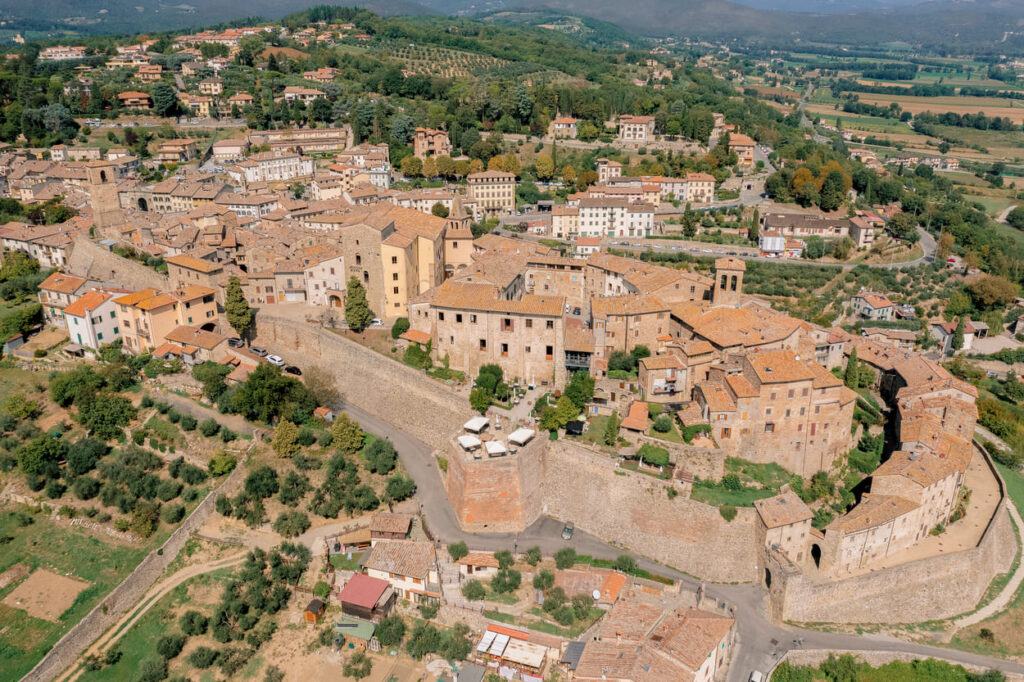
Monte Santa Maria Tiberina (Umbria)
Just across the Tuscan border, Monte Santa Maria Tiberina rises on a gentle hilltop, offering one of the most panoramic and uninterrupted views in the Upper Tiber Valley. Surrounded by woodland and steeped in noble history, the village is compact, peaceful, and beautifully preserved. From its highest points, you can enjoy a 360-degree view that stretches across hills, fields, and distant towns — a setting that feels both intimate and open to the landscape. The main square, flanked by the historic palazzo of the Bourbon del Monte family, provides a refined and atmospheric space for ceremonies and receptions.

Montone (Umbria)
Tucked into the Umbrian hills, Montone is a quiet, noble hamlet with a long history and a deeply romantic soul. Its architecture reflects the region’s rural elegance, with medieval towers, and gentle slopes opening onto wide vistas. The village offers a perfect mix of serenity and character, with intimate spaces for symbolic or religious ceremonies and beautiful courtyards ideal for open-air receptions. Montone is also well connected to nearby accommodations, making guest logistics smooth and comfortable.

Citerna (Umbria)
Citerna captivates with its soft tones, refined simplicity, and breathtaking views over the Tiber valley. Its main piazza, gently suspended above the landscape, opens onto a sweeping panorama that changes with the light throughout the day. The village’s proportions are harmonious, its streets quiet and intimate—offering a setting that feels balanced, authentic, and quietly romantic. It’s the kind of place where even a simple walk becomes part of the celebration.
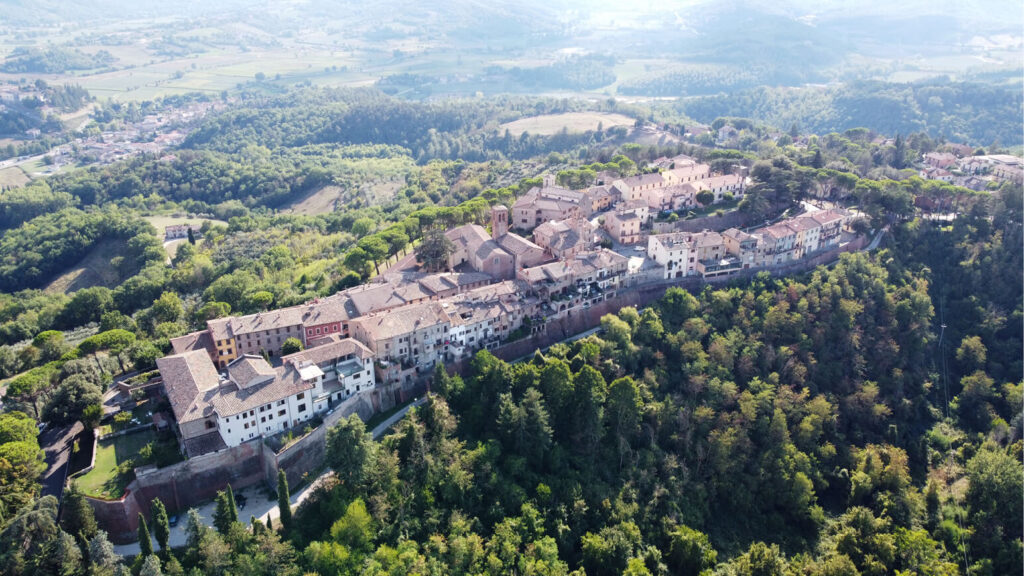
These are just three examples of the many hamlets in central Italy that can host a destination wedding with grace and character. Each has its own story, its own light, and its own way of welcoming people into a moment that feels entirely unique.
For a broader selection of villages that we know and love, you can visit our dedicated page on Italian wedding hamlets, where we share more places that embody this quiet, timeless beauty.
Planning a wedding in a borgo: how to make it work beautifully and with ease
Getting married in a small Italian village is a deeply rewarding choice—but it also comes with practical aspects that deserve attention. From understanding local logistics to shaping the overall flow of the celebration, planning a wedding in a borgo means working with the place and its people.
Each hamlet has its own characteristics, rhythms, and regulations. Depending on the location, couples may have the option of choosing between civil, religious, or symbolic ceremonies (see this article to learn about the legal procedures for a civil or religious wedding), but it’s important to understand what each place allows and how it works in practice.

Having someone who knows the territory—its rhythm, its people, its procedures—makes all the difference. Local knowledge is essential not just for permits, but also for choosing the most suitable and atmospheric spots within the village.
One of the greatest strengths of a hamlet wedding is the closeness of everything. Guests can walk from their accommodation to the ceremony, then to dinner, then back to their rooms—without transfers or delays. This allows the day to unfold in a natural and relaxed way.
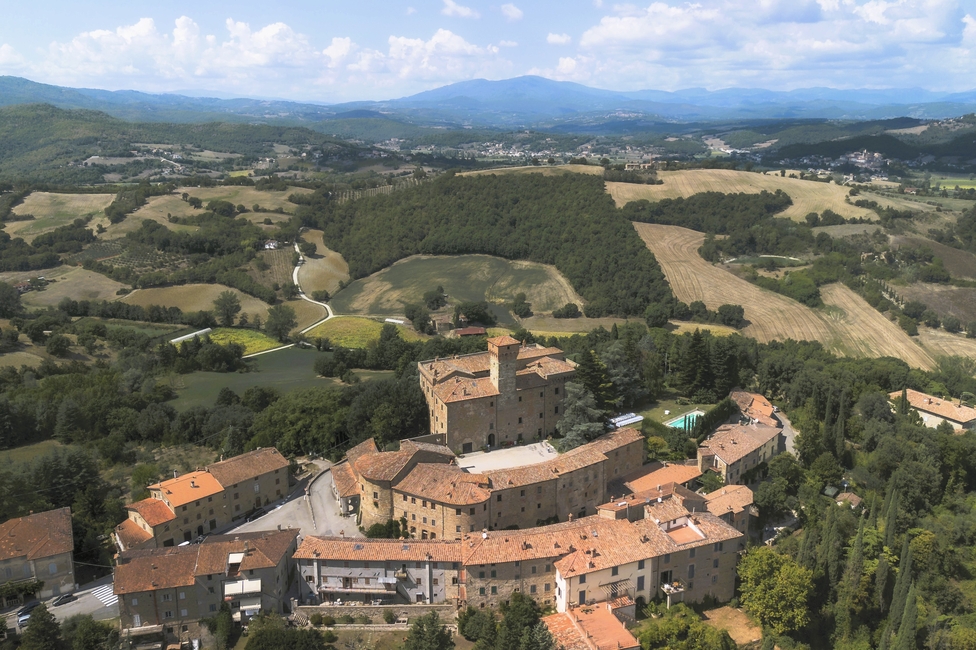
Most hamlets have a mix of small hotels, family-run guesthouses, and country villas nearby. While larger groups may need to spread across several properties, the distances are often short, and the shared experience of “living the village” adds intimacy to the event.
To enhance the guest journey, it’s worth thinking beyond the wedding day itself: a casual welcome drink in the piazza, a light lunch with local wine and views, or a farewell breakfast in a shaded courtyard. These moments are simple to arrange but become some of the most treasured memories.
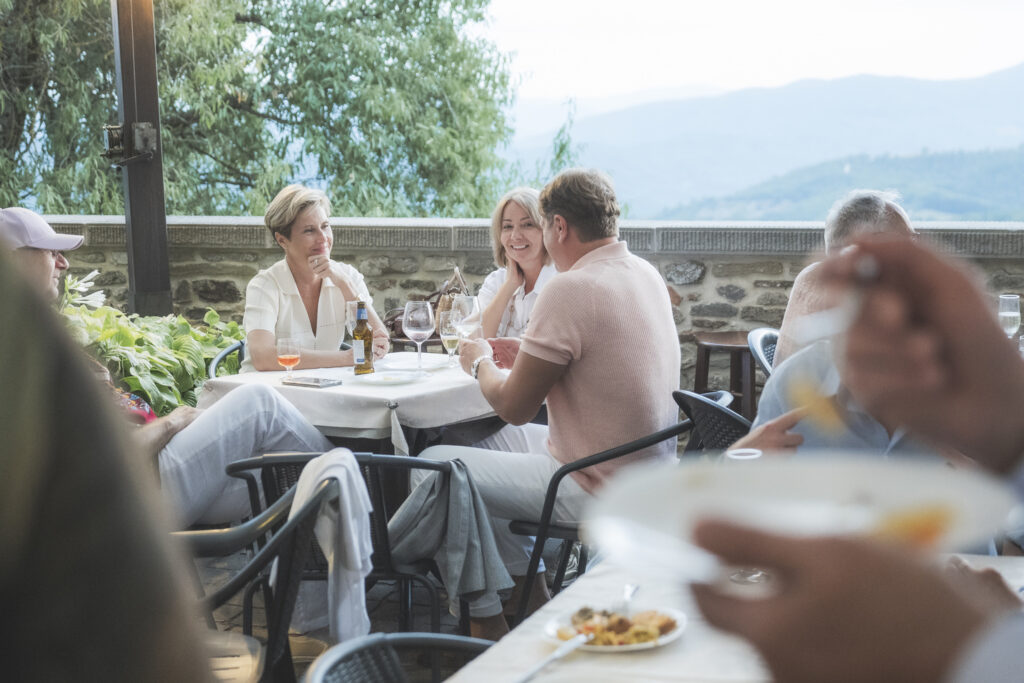
In a borgo, things happen differently than in a city or large venue. Florists may have their studio in a neighboring town. Many vendors—like florists, bakers, and caterers—are local artisans who work closely with the community. They may not be visible online, but they’re well known through word of mouth and trusted networks. Sound systems and lighting may need to be brought in, respecting local regulations on noise and setup hours.
This is where the role of a wedding planner becomes essential—not only to coordinate logistics and anticipate needs, but also to build a team that respects the place and elevates the experience. A planner with local roots can navigate the nuances of the setting with ease, balancing beauty, efficiency, and discretion.
It’s also important to remember that Italian villages have their own tempo. Deliveries are slower. Streets are narrower. And that’s part of the charm. The goal isn’t to recreate a hotel wedding in a rustic setting, but to let the setting shape the celebration.
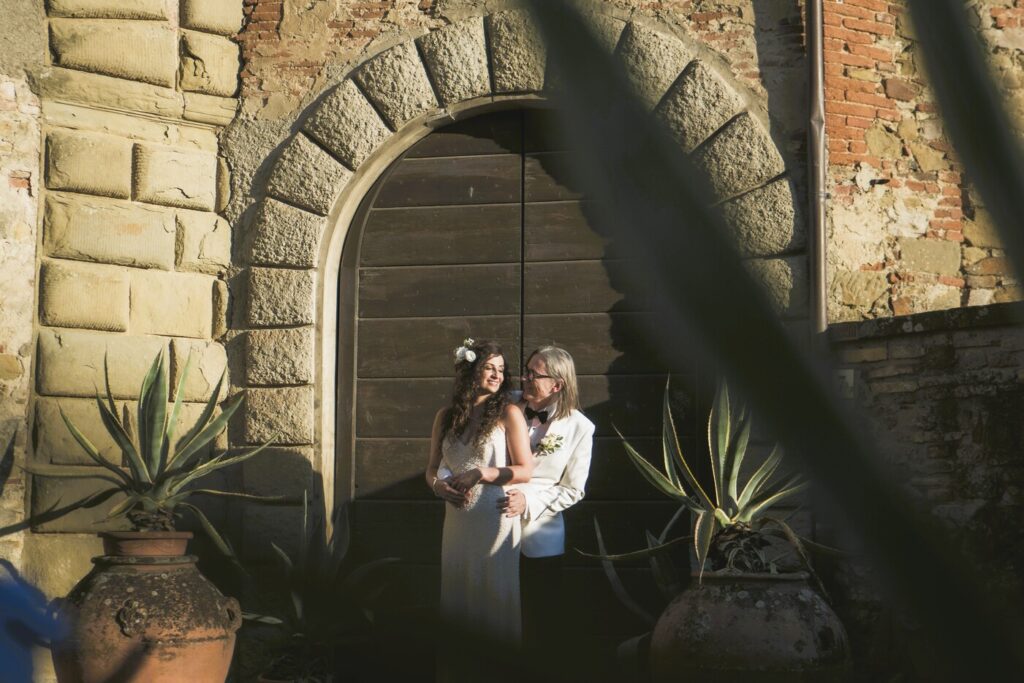
The most successful weddings in hamlets are the ones that embrace their context. Rather than importing too much, they enhance what’s already there—the warm light, the aged stone, the silence of a summer evening. Fewer decorative elements, well chosen, often resonate more in such settings.
Even small practical details—like choosing flat shoes for uneven cobblestones, or offering handheld fans during a summer ceremony—can make guests feel cared for without breaking the tone.
In the end, a wedding in a borgo doesn’t follow a fixed format. It’s built around the couple, the place, and the people they invite. And when planned thoughtfully, it unfolds with a kind of natural elegance that no script could ever replicate.
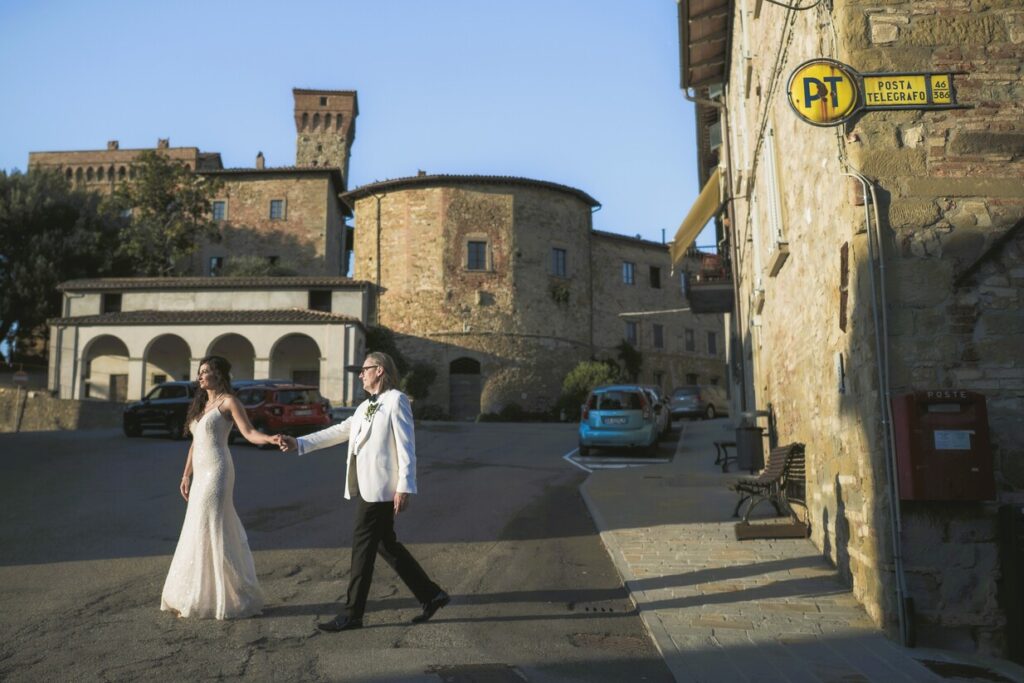
Conclusion
Getting married in an Italian hamlet is not about creating something elaborate — it’s about choosing a place that already has a soul, and allowing it to become part of your story.
These villages, with their quiet beauty and enduring rhythm, invite you to celebrate in a way that feels close, grounded, and sincere. They offer a different perspective: one where every moment matters, and where the atmosphere itself becomes a part of the memory.
For years, Romantica Italia has been working closely with the institutions of selected Tuscan and Umbrian hamlets, building relationships that allow couples to access spaces and settings often not open to the public. Thanks to these partnerships, planning a wedding in a borgo becomes not only possible, but fluid and well supported—without losing the authenticity that makes these places so special.
There is also a quiet but important impact that comes with this choice. Getting married in a village means supporting a living place—one made of people, traditions, and everyday rhythms. It means choosing local artisans, staying in family-run accommodations, and working with those who care deeply about their territory. A hamlet wedding is not only intimate and poetic; it’s also a way of embracing a more socially sustainable way to celebrate.
In the end, what remains is not just the memory of a beautiful day, but the sense of having truly belonged to a place—for a moment, or perhaps forever.
GET IN TOUCH

